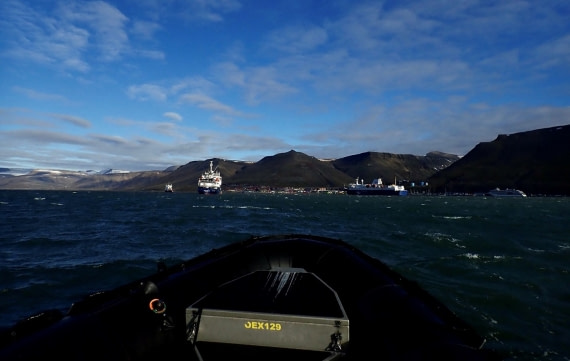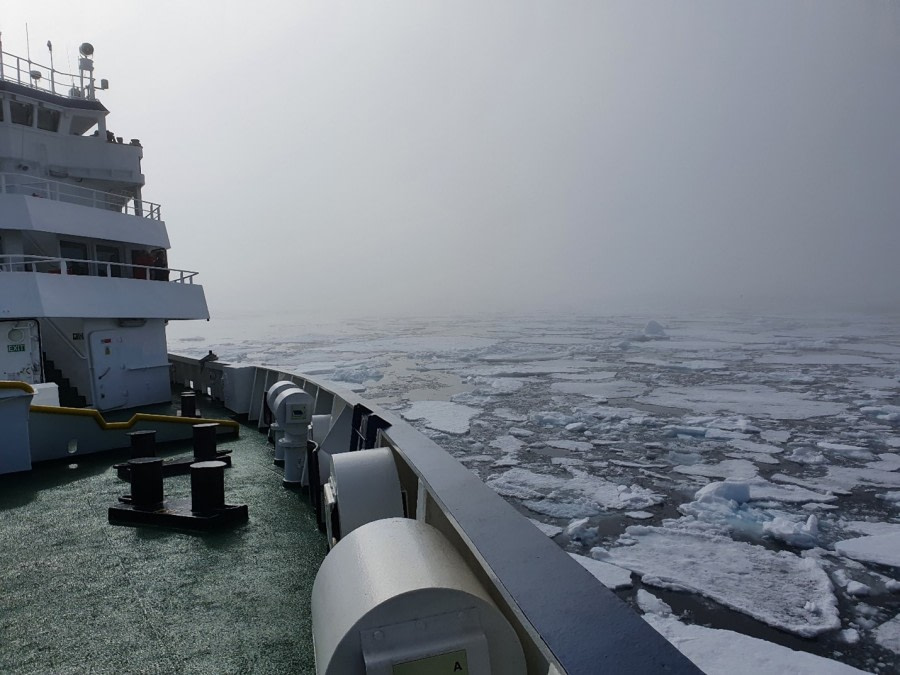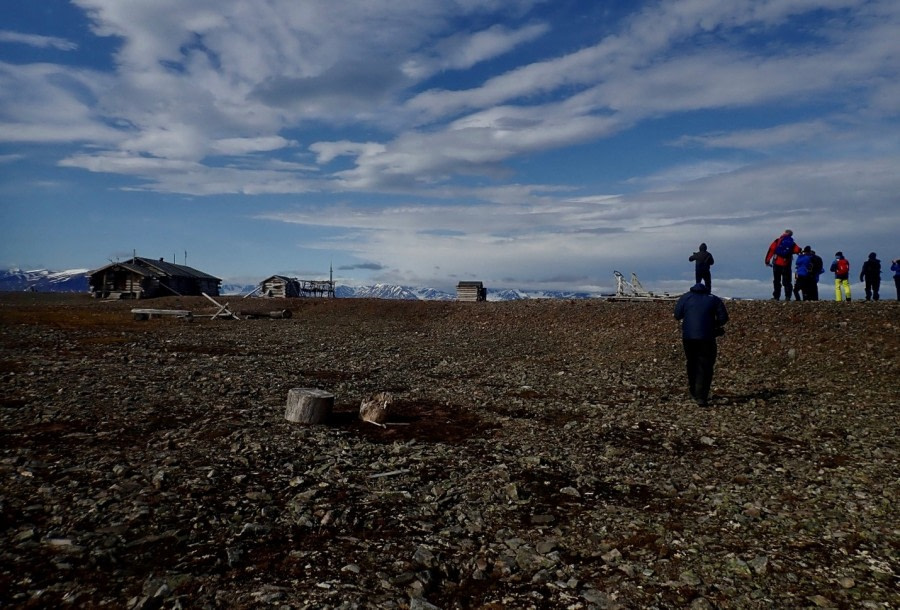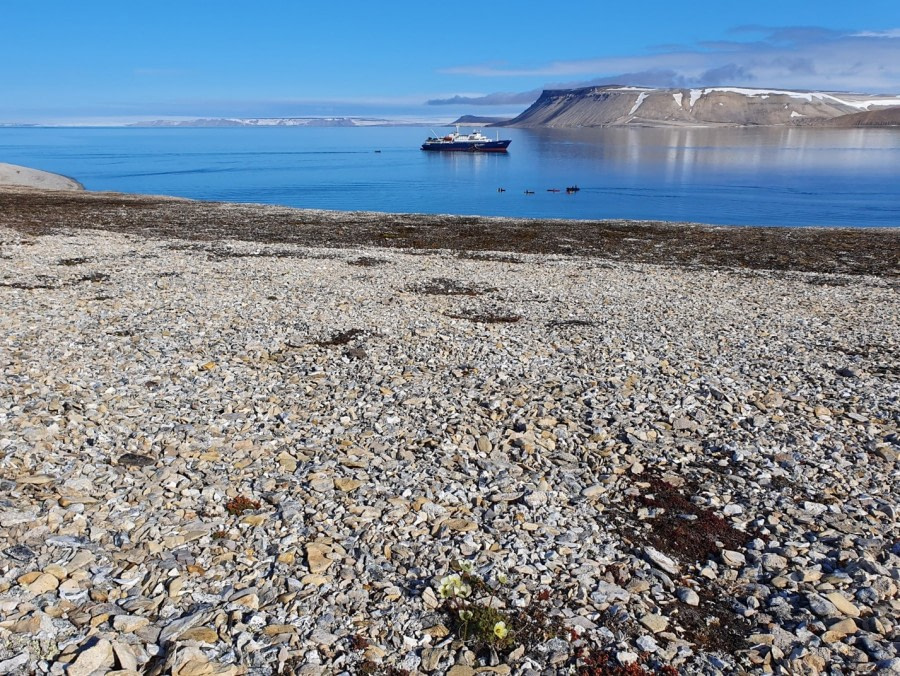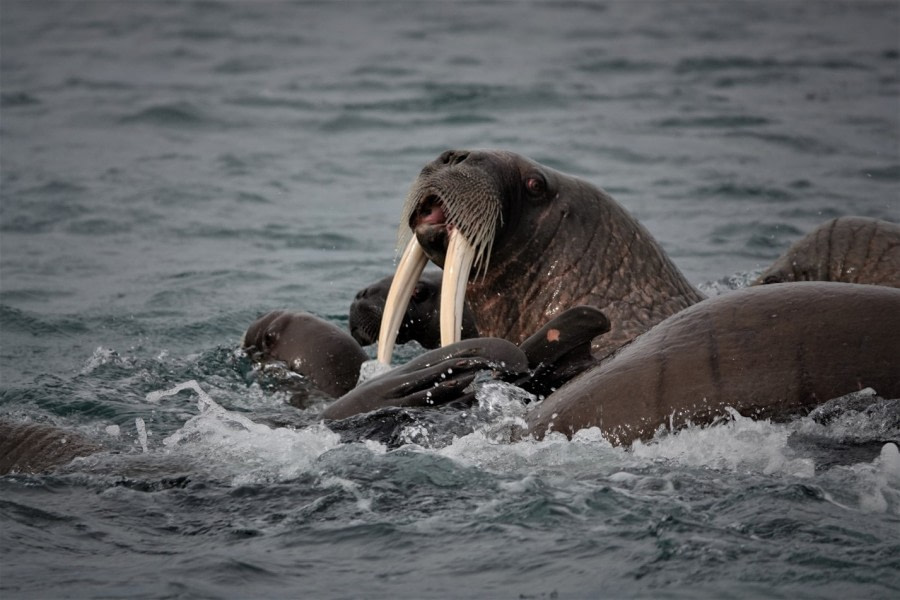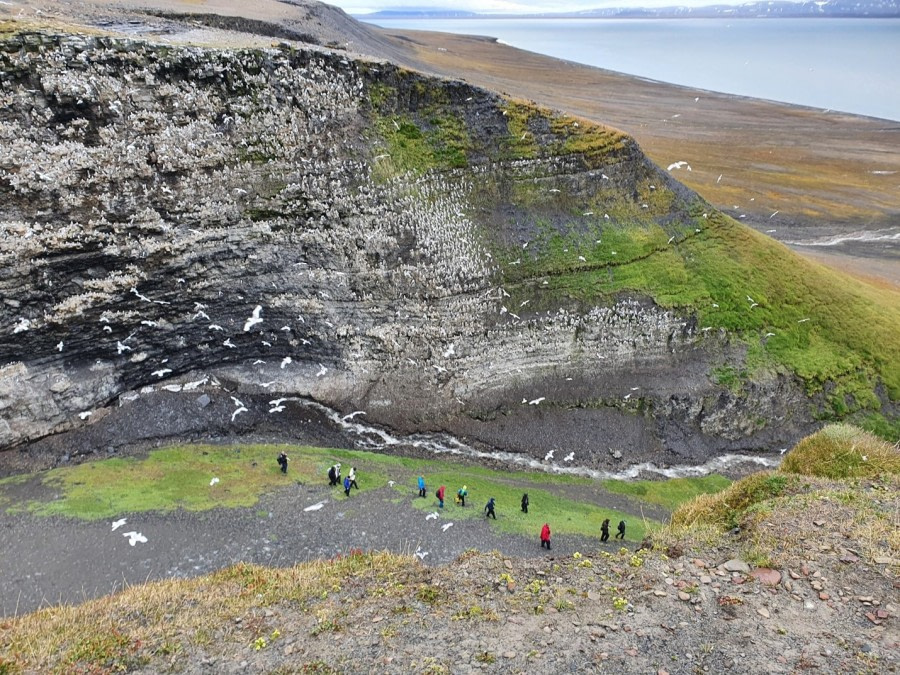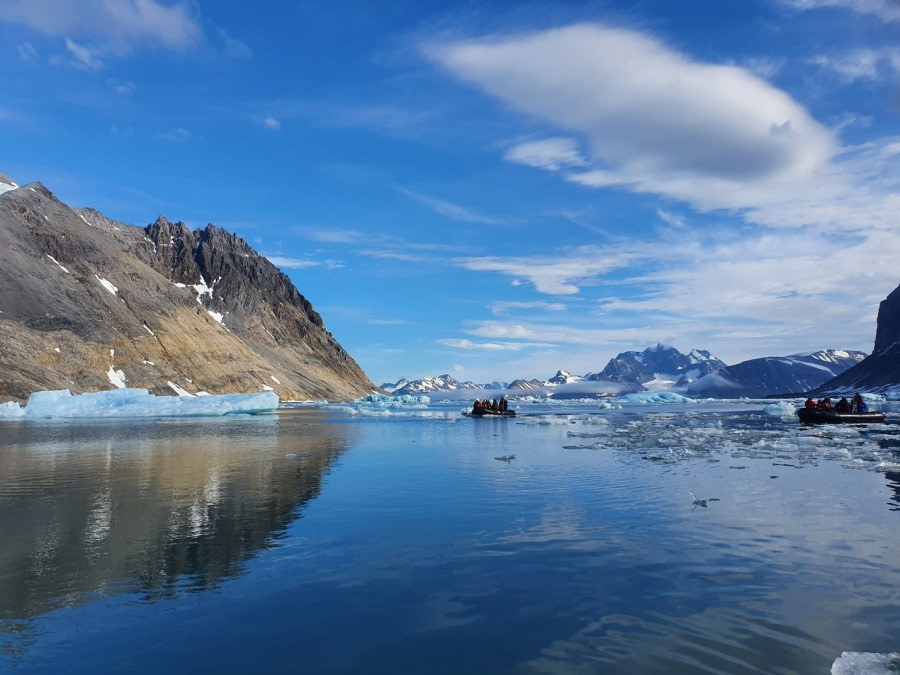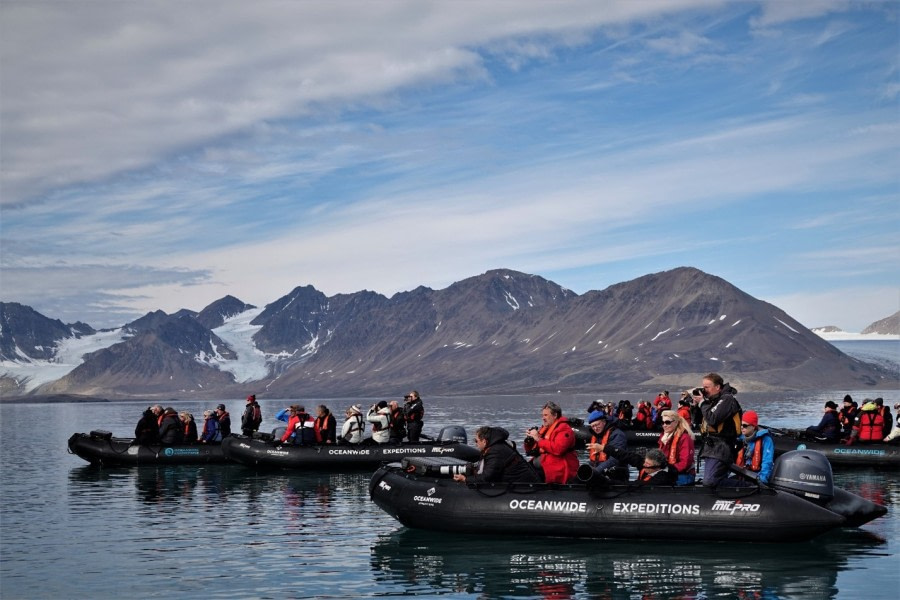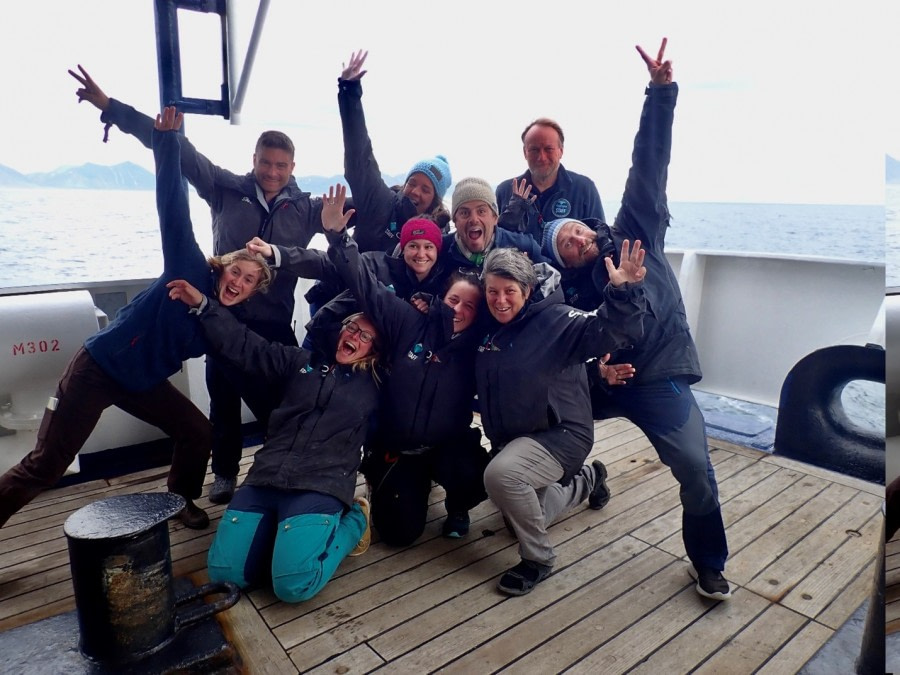| Fecha: |
15.07.2022 |
| Posición: |
78°13.8’ N 015°36.2’E |
| Viento: |
S-4/5 |
| Clima: |
Overcast |
| Temperatura del Aire: |
+10 |
Back in Longyearbyen the crew did a fantastic job of getting the ship and zodiacs in the right places at the right times to get us all to our desired onward journeys successfully. We certainly lucked out for this disembarkation as we were able to go alongside the pier.
After delicious last breakfast on board of French toast and fresh fruit it was time to say our goodbyes.
It is a sad moment to disembark from the Plancius, which has been a comfortable and cosy home during this unforgettable journey. We have shared many unique moments, seen a range of rarely sighted wildlife, and made new friends. Loaded with fond memories we now must head to our onward journeys.
Kayak Trip Log
Alexis Bellezze and David Horkan
Kayaking around Spitsbergen, a day in the pack ice looking for whales and hundreds of harp seals around us, the search for Polar bears in different bays, cliffs and close to the glaciers, paddling in a middle of nowhere in silence, with no engine but your soul and your arms, that is what we call proper exploration. A unique opportunity to be closer to everything around you.
Monacobreen
We started early in the afternoon at Monacobreen, a glacier that has retreated enough so that what was once one large glacier front is now split into two smaller fronts by a mountain. From this mountain we saw rocks falling from the top of a steep mountain in between the glaciers. We observed a colony of kittiwakes at the glacier.
Many sounds surrounded us including the booming from calvings in the distance. Occasionally we caught sight of an impressive mass of ice disintegrating after it collapsed into the sea, spreading growlers of ice that drift with the wind. This was an excellent start to the learning process to build foundations for a busy week in the archipelago.
Alkefjellet
After that, we went to Alkefjellet, “Guillemot mountain”, a great and long cliff of basaltic columns that serves as a breeding ground for 60,000 pairs of Brünnich’s guillemots, kittiwakes, glaucus gulls and Northern Fulmars.
The atmosphere was magnificent, and we were truly part of the landscape with the noise of the birds, the vibrating walls, the birds swimming and flying around us. We were lucky to see three Arctic foxes, one even feeding on a fallen bird, and the others looking for hunting opportunities at the base of the rock pillars. The experience was simply unbelievable and overwhelming.
Palanderbukta
The day after we had a relaxing morning at Palanderbukta.
We had the chance to practice and improve our paddling techniques, the bay was calm, no waves, no wind and not cold at all. In silence we had the chance to listen to a walrus in the distance. Luckily the walrus was not so interested so it did not disturb our morning of kayaking. This was perfect kayak training time allowing some of the kayakers to became more confident and they were extremely happy.
Torellneset
Another day under more challenging conditions was celebrated at Torellneset.
While we were paddling, several Common Eider ducks and a reindeer came from the plateau toward us. The zodiac safety driver was checking the proximity of many walruses in the area of the glacier and as a result, decided to bring the kayaking to an end earlier than planned. This gave us time to observe the animal behaviour from a distance in the zodiac on our way back to the ship. Many of the walruses showed interest in the visitors and check us with curiosity.
The last session happened at Burgerbukta, the perfect place for a farewell to the Arctic! In a bay surrounded by jagged mountains and beautiful clouds in the sky.
The landscape was dramatic. Extremely beautiful mountains and an ocean littered with ice. There was silence amongst us as we listened to the crackling ice and the rolling icebergs. It was magical. We were paddling with more freedom but under supervision of the kayak guides and the zodiac driver. We enjoyed the icebergs and the quiet afternoon in one of the most beautiful places in Svalbard.
We want to wish you all more adventures in beautiful places like this one, and hope that we can paddle around the Antarctic sound in the future.
It was a pleasure for us to share this passion and respect for nature and wildlife with you.
Thank you very much and see you soon!!


